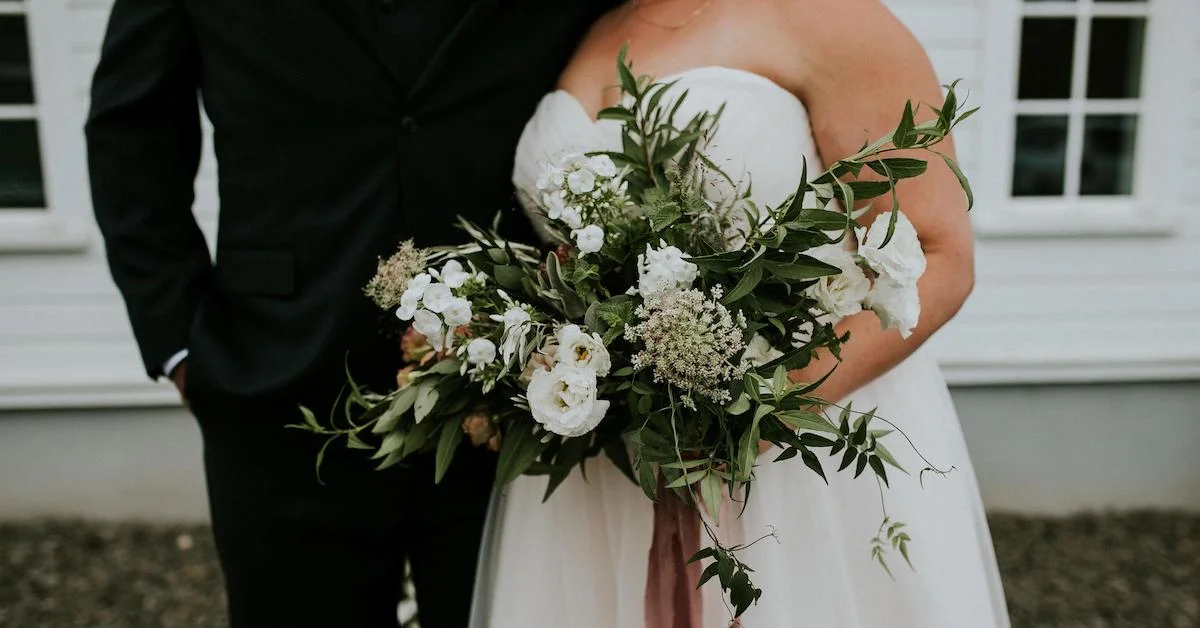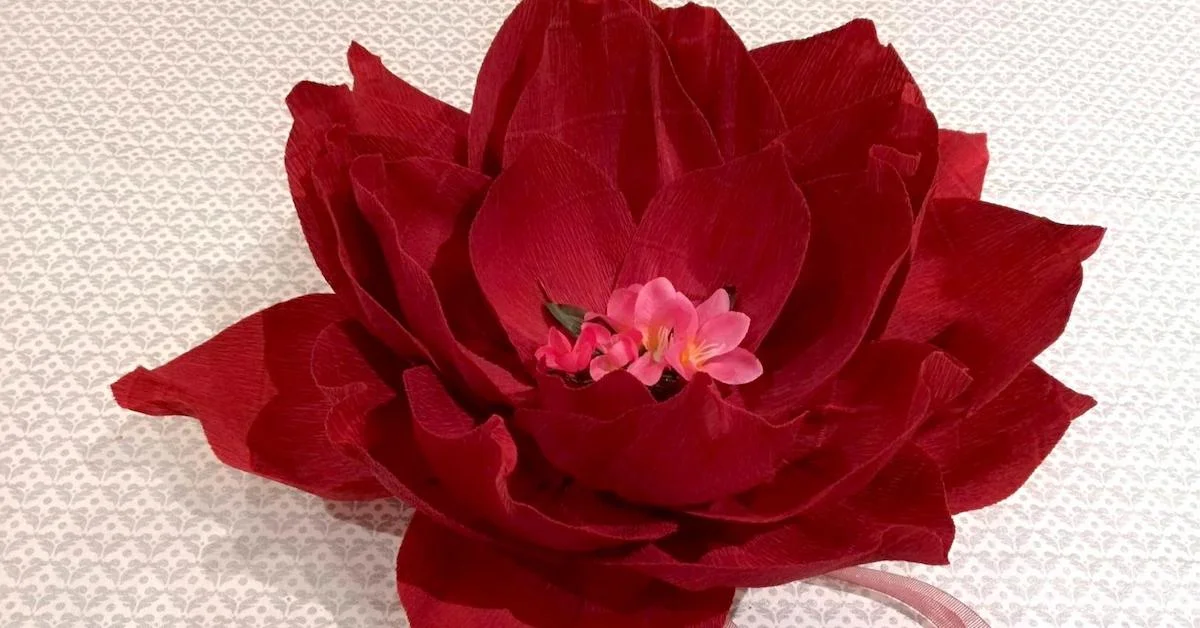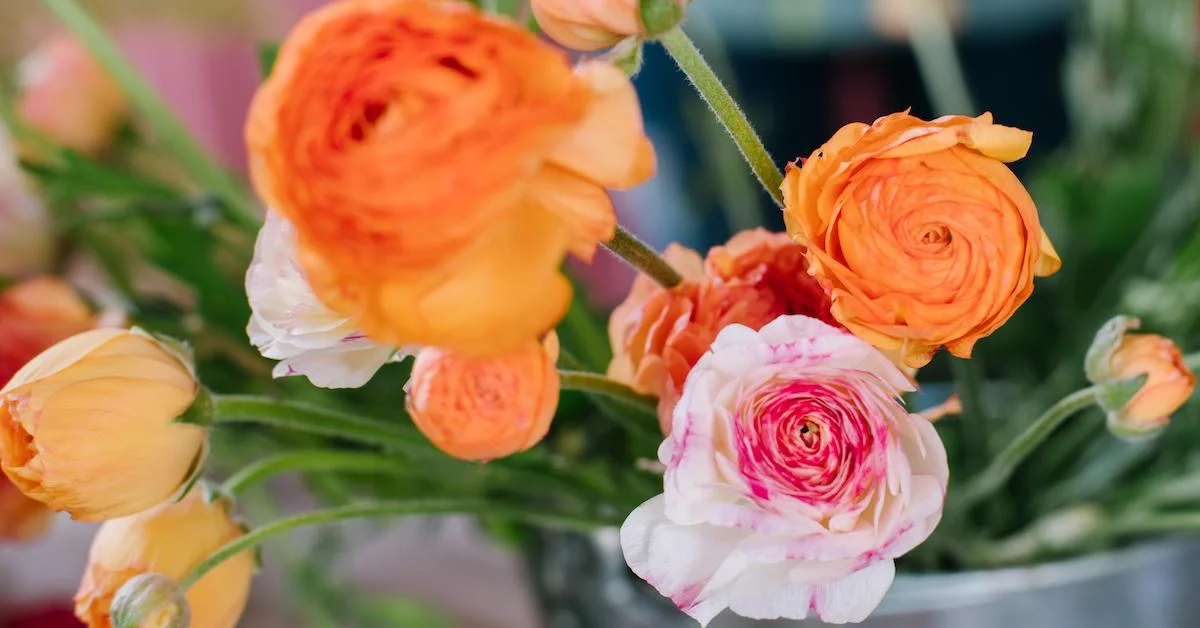Today, we are so excited to be talking about a part of our client process that we think is one of the most important: how to design florals with the client in mind and put your client first in your floral work—essentially, balancing your style with the client's vision.
All in Articles
Reliable Flowers for Foam-Free Installations
Foam-free floral design installations are all the rage in the floral industry, and there are countless resources that give advice for the mechanics of these designs. But what about the flowers and greens? What if you’re unable to give them a water source?
Your Guide to Planning a Styled Shoot as a Florist
As an event florist new to the industry, part of my business plan included planning my own styled shoot to build my portfolio, network with other vendors, and create opportunities for my work to be published. (Learn more about if a styled shoot is right for your business here.) I quickly realized that a styled shoot for floral designs requires a lot of planning to be successful—which can be overwhelming! So I’ve listed here the documents and creative tools in planning order so you can have a road map when you plan your next shoot!
The 7 Rules of Responsible Foraging for Floral Design
Foraging is an excellent way to increase interest, romance, and variety to your arrangements. Foraged elements add depth, contrast, and dimension to your creations. Foraging is economical, allowing you to create bespoke floral designs and maximize the impact of your compositions. Though foraging is a simple concept, it is a skill that requires knowledge and care.
Looking to Nature for Floral Design Inspiration
Nature is not always perfect. But we do not look at a tree and say “that leaf is damaged” or “that bloom is going brown." Rather, we look at the tree as a whole and enjoy its beauty. We should look at our design work the same way. I will always remember a talented designer saying, “It doesn’t have to be perfect to be beautiful."
How to Design Flower Arrangements in Difficult Color Palettes
Tellie Hunt of Hunt & Gather Floral in Canada joins us for an interview chatting about her favorite design tool: color! In this interview, you’ll hear about her journey from a tattoo artist apprenticeship to owning her floral design business. She talks through the importance of color, and you’ll also hear about how to design flower arrangements in difficult color palettes. Whether you’re looking to change career paths or take that next step in your relationship with color, you’ll be inspired by this conversation.
How to Make a Large Paper Flower
Paper flowers are making a statement in the floral industry. Not only do they never wilt, but they can also be made to look like a real bloom! Perhaps you’re hesitant to use paper flowers because it’s unfamiliar territory. Maybe you could try making one yourself! Here are a few simple instructions on how you can make a large paper flower for your next event.
The Growing Kindness Project: Using Flowers to Brighten Your Community
The aim of the project is so simple: first, grow some flowers. Next, look around your community. Where is there a need for connection and encouragement? Perhaps the most beautiful part of this project is that each person sees a different need. Now, walk across the street to your neighbors, down the road to a retirement center, over to that mama patiently unloading her grocery cart while juggling three little people, or the fire station or food bank or wherever you see a heart waiting to be encouraged. Now hand them flowers.
Where and How to Sell Cut Flowers from Your Farm
When I tell someone I’m a flower farmer and I have four acres of flowers, they get starry-eyed. It is a beautiful, dreamy, and peaceful life with a whole lot of sweat, tears, dirt, and hard work thrown in. And it can be difficult to know where and how you should sell flowers from your farm. Each community of customers is different, but there are several key locations we’ve found work well for selling the cut flowers.
4 Tricks for Working in a Small Floral Design Studio Space
Whether you live in a big city or a small town, space is a beautiful thing as a floral designer. If you rent or own studio space, it can be difficult to know how to make the most of what you have. Others, like myself, have to utilize whatever limited area is available in their homes. Here are four things I’ve learned for making the most of small spaces for design.
Tips for Managing Floral Logistics in a Big City
Life as a florist in a large metropolitan area can be both challenging and rewarding. Since moving from Kentucky to New York City, I’ve learned many lessons in adaptability, flexibility, and patience (car, studio, and cooler, I miss you!). But I’ve also found that for the same reasons, my appreciation for flowers and my admiration for their resilience has deepened! Floral work is undoubtedly a labor of love, but over time I’ve discovered some tips that have made the big city flower life easier. Whether you’re a city native who’s venturing into flowers for the first time or a seasoned flower pro transitioning into big city life, I hope these tips can be helpful for you too!
3 Keys to Work Life Balance for Flower Momprenuers
Hey, flower mom! You're probably reading this article because you’ve been wondering how you can manage to be the mom you desire and run a thriving flower business. You might often ask yourself, Can I really do this? How can I make this work? Is it actually possible to “have it all”?
5 Useful Perennials You Can Grow for Your Own Floral Designs
Many floral designers are beginning to dabble in growing their own flowers as much as they can. The feeling of growing, cultivating, harvesting, and eventually arranging with stems that you produced yourself is a transcendent experience that you can enjoy by planting these easy-to-grow, beautiful perennials in whatever garden you might have available.
Is This Pop-Up Smart for Your Floral Business? Here's How to Know
Pop-ups, workshops, and handmade markets are all on-trend, but I hear more and more participants complaining they’re a bust and a waste of time and money when, in fact, these types of events can be a great money maker for your floral business and a vehicle to let people in your community know about your floral services.
8 Outstanding Tips for Excelling in Retail Floral Work
In my view, the flower business is 25% design, 50% sales and marketing, and 25% financial and human resource management. Even if you don’t own your business, understanding basic business principles will make you extremely valuable to your employer. Don’t underestimate the power of the business of flowers!
4 Best Practices for Keeping Personal Flowers Fresh
Personal flowers are the most important of the wedding day—and sometimes the ones that get the least amount of care! Bouquets, boutonnieres, corsages, posies, and flower crowns… these are the flowers used most in photos (and the flowers that are least likely to be in water throughout the day), so it’s essential to implement best practices ahead of time to make sure they are as fresh as possible.
Top Reasons Why I Decided to Get My AIFD Floral Accreditation
While completing my basic floral training and starting my career as a shop assistant, while there are many avenues for training and certification, I set for myself the goal of becoming a wedding designer and ultimately earning my AIFD accreditation.
How to Plant a Peony Cutting Garden
Is there anything more thrilling than preparing a garden plot that will pay floral dividends for years to come? Many gardeners plant peonies for pure enjoyment, but peonies also play an important role commercially as a high-dollar flower for floral design work. As a farmer-florist, you can grow the cultivars that compliment your design style, including some that are otherwise hard to find or not available on the commercial market. You also have total control over the harvest, selecting only the most perfect buds for your design work.
Quick Guide to Growing Hellebores
Blooming from December into early spring, they are a much-anticipated bloom, the first of the year here in Oregon. Hellebores like a shady position in the garden with well-drained soil. They love a well-prepared site, cultivated deeply for their long and fleshy roots, about two to three feet deep and amended with rotten manure.
How to Become a Large-Scale Flower Business
Growing a business from 10 events a year to 200+ events that you manage and produce with a team begins with a major mind-set shift. Once you start thinking about your business in a certain way, you will begin to make decisions which line up with that vision of your business. If this is your goal, here’s how I made that shift myself.




















